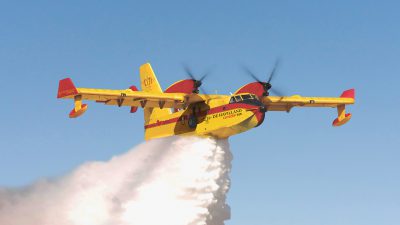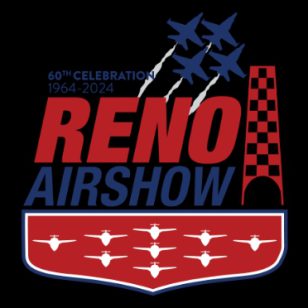
- De Havilland Canada marked the conclusion of its sale of 22 DHC-515 Firefighter aircraft to a consortium of European Union countries on Friday (Oct. 4), while simultaneously announcing a name change for the aircraft. “When people are close to a wildfire in Europe, they ask when the Canadairs will come to help protect their community,” De Havilland Canada CEO Brian Chafe said at the ceremony. “Today, we are recognizing the history of service of the Canadair fleet by renaming the aircraft the ‘De Havilland Canadair 515.”

- The Reno Airshow is happening this weekend. Among the many performers will be the CAF Snowbirds, marking the 100th anniversary of the RCAF. The Reno Airshow is giving the Snowbirds top billing. The airshow can be followed live via video streaming. The Saturday show begins at 1 pm ET / 10 am PT. Click here to view the Saturday show.

- Canada’s CAE, known for its industry-leading full-motion flight simulators, has been awarded a 25-year sub-contract by SkyAlyne, a consortium that has been awarded a contract by the RCAF to provide pilot training to its recruits. The SkyAlyne consortium is a joint venture between Kelowna’s KF Aerospace and CAE.

- The Canadian Business Aircraft Association (CBAA) has been protesting the federal government’s decision in 2022 to levy a luxury tax on aircraft valued at more than $100,000. The government committee tasked with reviewing these types of complaints, the Standing Joint Committee for the Scrutiny of Regulations (the Joint Committee) replied in a letter to the CBSA last week that “…the [order implementing the tax] does not contravene any of the Joint Committee’s criteria and was closed without further comment.” The CBAA vows to continue to seek revisions to the tax.

- Saturday, October 5 marks the 40th anniversary of Canadians in space, which started with Marc Garneau’s first space trip on NASA’s space shuttle mission STS-41-G. “Innovation has been the backbone of Canada’s space program since the very beginning,” said Industry minister François-Philippe Champagne. “In the early 1970s, we stepped up to the challenge and took bold steps forward when NASA sought Canadian expertise for the development of a robotic technology, the famous Canadarm. The future ahead is indeed very bright: we are going back to the Moon, and Canada intends to remain in the front seat.”
